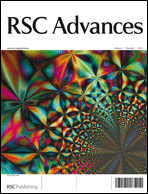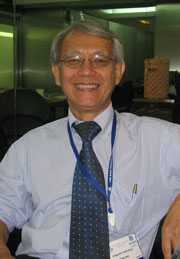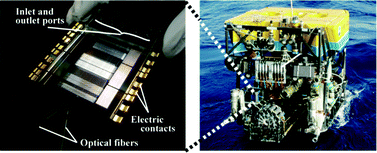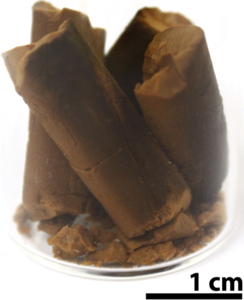Here at RSC Advances, we wish to celebrate Chinese new year by highlighting some of our recently published articles on energy and power generation:
Sustainable power generation
Supercritical fluid extraction (SFE) as an effective tool in reducing auto-oxidation of dried pine sawdust for power generation
Mehrdad Arshadi, Andrew J. Hunt and James H. Clark
RSC Adv., 2012, Advance Article, DOI: 10.1039/C1RA00715G, Paper
Bioelectrochemical systems (BES) for sustainable energy production and product recovery from organic wastes and industrial wastewaters
Deepak Pant, Anoop Singh, Gilbert Van Bogaert, Stig Irving Olsen, Poonam Singh Nigam, Ludo Diels and Karolien Vanbroekhoven
RSC Adv., 2012, Advance Article, DOI: 10.1039/C1RA00839K, Review
A new outlook on solubility of carbohydrates and sugar alcohols in ionic liquids
Lucinda J. A. Conceiçao, Ewa Bogel-Łukasik and Rafał Bogel-Łukasik
RSC Adv., 2012, Advance Article, DOI: 10.1039/C1RA01006A, Paper
Lithium ion batteries
Facile preparation of hydrated vanadium pentoxide nanobelts based bulky paper as flexible binder-free cathodes for high-performance lithium ion batteries
Xianhong Rui, Jixin Zhu, Weiling Liu, Huiteng Tan, Daohao Sim, Chen Xu, Hua Zhang, Jan Ma, Huey Hoon Hng, Tuti Mariana Lim and Qingyu Yan
RSC Adv., 2011, 1, 117-122
Magnetite/graphene nanosheet composites: interfacial interaction and its impact on the durable high-rate performance in lithium-ion batteries
Jisheng Zhou, Huaihe Song, Lulu Ma and Xiaohong Chen
RSC Adv., 2011, 1, 782-791
Electrospun carbon nanofibers decorated with various amounts of electrochemically-inert nickel nanoparticles for use as high-performance energy storage materials
Liwen Ji, Zhan Lin, Mataz Alcoutlabi, Ozan Toprakci, Yingfang Yao, Guanjie Xu, Shuli Li and Xiangwu Zhang
RSC Adv., 2012, 2, 192-198, Paper
K0.25Mn2O4 nanofiber microclusters as high power cathode materials for rechargeable lithium batteries
Chaofeng Zhang, Chuanqi Feng, Peng Zhang, Zaiping Guo, Zhixin Chen, Sean Li and Huakun Liu
RSC Adv., 2012, Advance Article, DOI: 10.1039/C1RA00510C, Paper
Stabilized cycling performance of silicon oxide anode in ionic liquid electrolyte for rechargeable lithium batteries
Jin-Woo Song, Cao Cuong Nguyen and Seung-Wan Song
RSC Adv., 2012, Advance Article, DOI: 10.1039/C2RA01183B, Paper
Capacitors and supercapacitors
Electrochemical capacitors utilising transition metal oxides: an update of recent developments
Wentao Deng, Xiaobo Ji, Qiyuan Chen and Craig E. Banks
RSC Adv., 2011, 1, 1171-1178, DOI: 10.1039/C1RA00664A, Review
An electrochemically formed three-dimensional structure of polypyrrole/graphene nanoplatelets for high-performance supercapacitors
Peng Si, Shujiang Ding, Xiong-Wen (David) Lou and Dong-Hwan Kim
RSC Adv., 2011, 1, 1271-1278, Paper
High-performance aqueous supercapacitors based on hierarchically porous graphitized carbon
Zheng Chen, Ding Weng, Hiesang Sohn, Mei Cai and Yunfeng Lu
RSC Adv., 2012, Advance Article, DOI: 10.1039/C2RA00887D, Communication
Fuel Cells
Robust solid oxide cells for alternate power generation and carbon conversion
Xiaoming Ge, Lan Zhang, Yanan Fang, Jie Zeng and Siew Hwa Chan
RSC Adv., 2011, 1, 715-724
DOI: 10.1039/C1RA00355K, Paper
Symmetric and reversible solid oxide fuel cells
Juan Carlos Ruiz-Morales, David Marrero-López, Jesús Canales-Vázquez and John T. S. Irvine
RSC Adv., 2011, 1, 1403-1414, DOI: 10.1039/C1RA00284H, Review
Electrochemical growth of gold nanostructures on carbon paper for alkaline direct glucose fuel cell
Sze-Ping Tung, Ting-Kai Huang, Chi-Young Lee and Hsin-Tien Chiu
RSC Adv., 2012, 2, 1068-1073, Paper
Solar Cells
Large scale two-dimensional nanobowl array high efficiency polymer solar cell
Szu-Ying Chen, Yu-Ting Yen, Yi-Yang Chen, Chain-Shu Hsu, Yu-Lun Chueh and Lih-Juann Chen
RSC Adv., 2012, Advance Article, DOI: 10.1039/C2RA01258H, Communication
Efficient Small Molecule Organic Semiconductor containing Bis-dimethylfluorenyl Amino Benzo[b]thiophene for High Open Circuit Voltage in High Efficiency Solution Processed Organic Solar Cell
Jooyoung Kim, Haye Min Ko, Nara Cho, Sanghyun Paek, Jae Kwan Lee and Jaejung Ko
RSC Adv., 2012, Accepted Manuscript, DOI: 10.1039/C2RA01271E, Communication
A bilayer structure of a titania nanoparticle/highly-ordered nanotube array for low-temperature dye-sensitized solar cells
Jianqiang Luo, Lian Gao, Jing Sun and Yangqiao Liu
RSC Adv., 2012, Advance Article, DOI: 10.1039/C2RA00731B, Paper
More energy-related articles can be read here. Please note that all of our articles are free to download upon a simple registration process.
RSC Advances wishes a happy chinese new year to all our authors, referees, readers and editors.














 RSC Advances
RSC Advances








